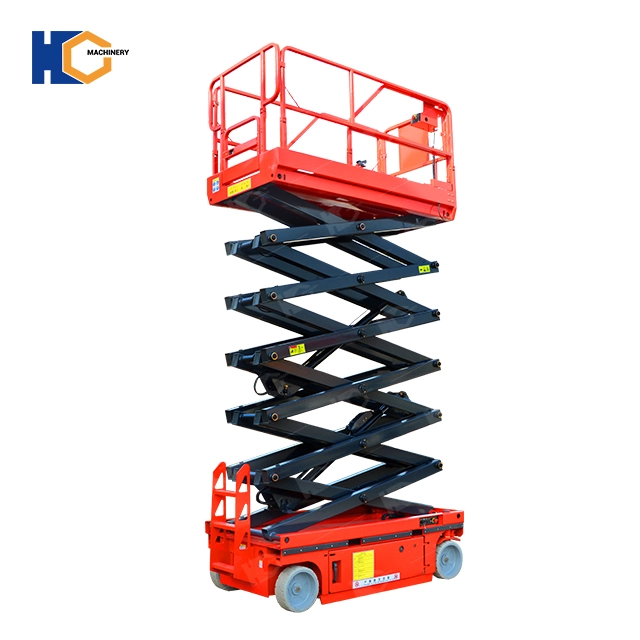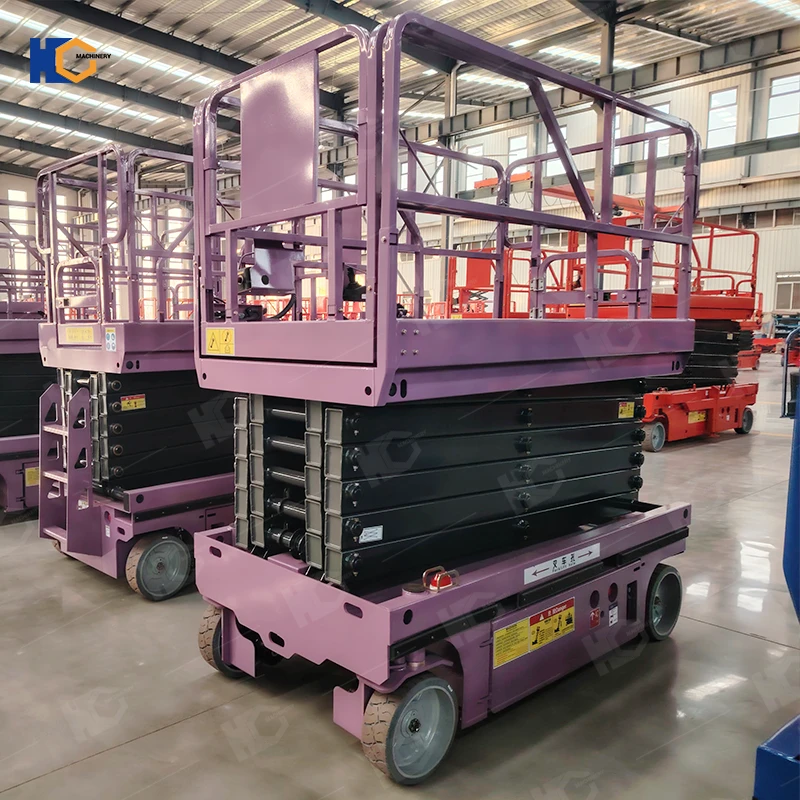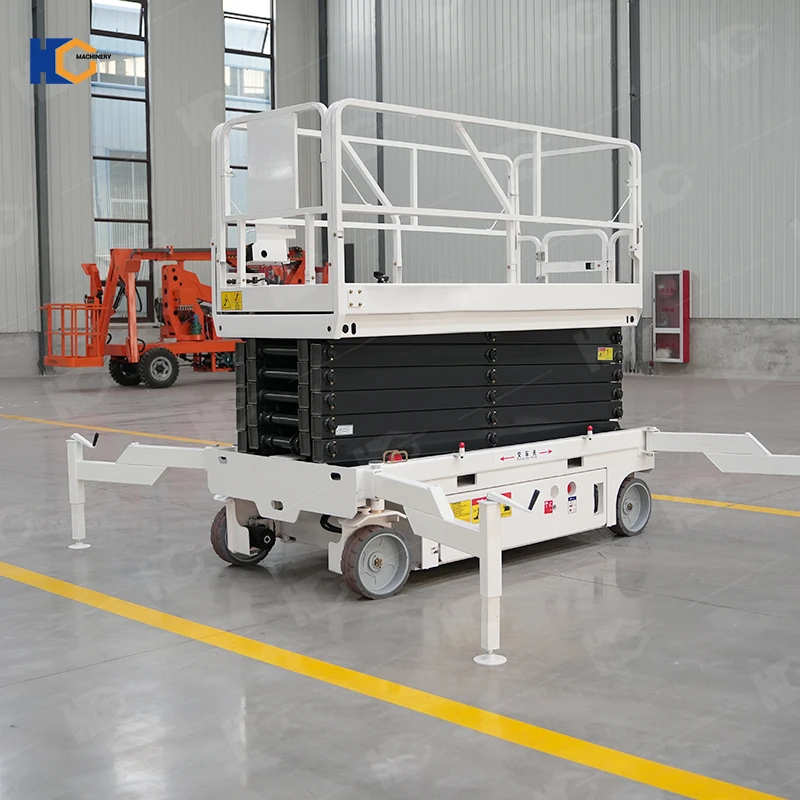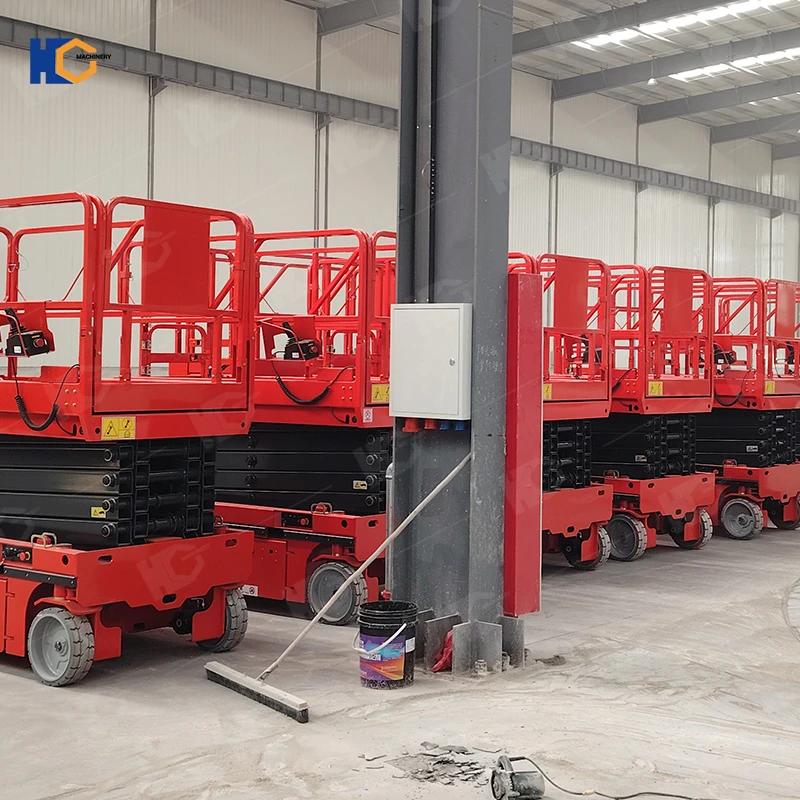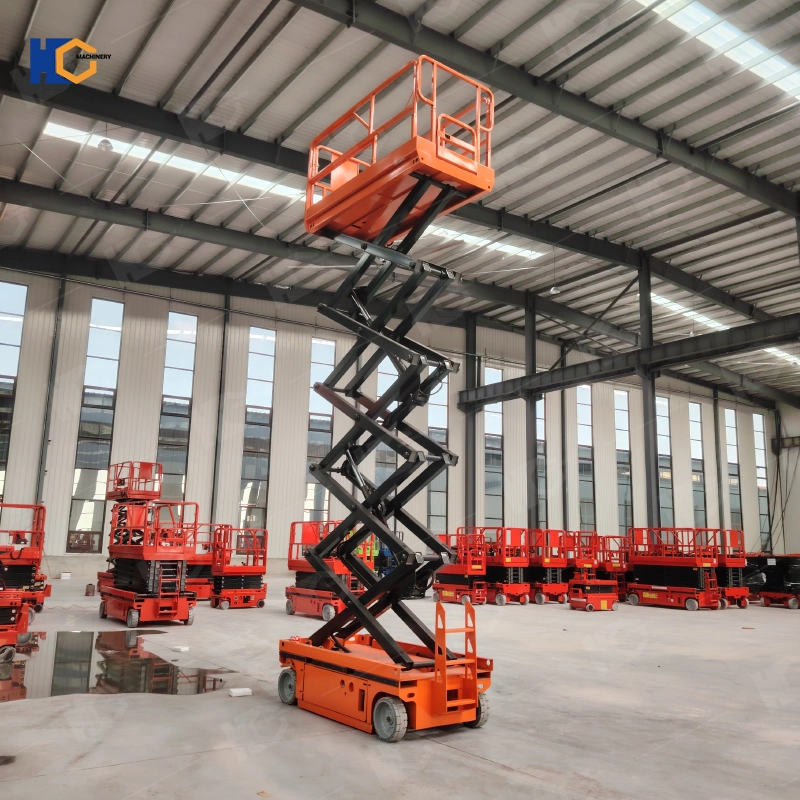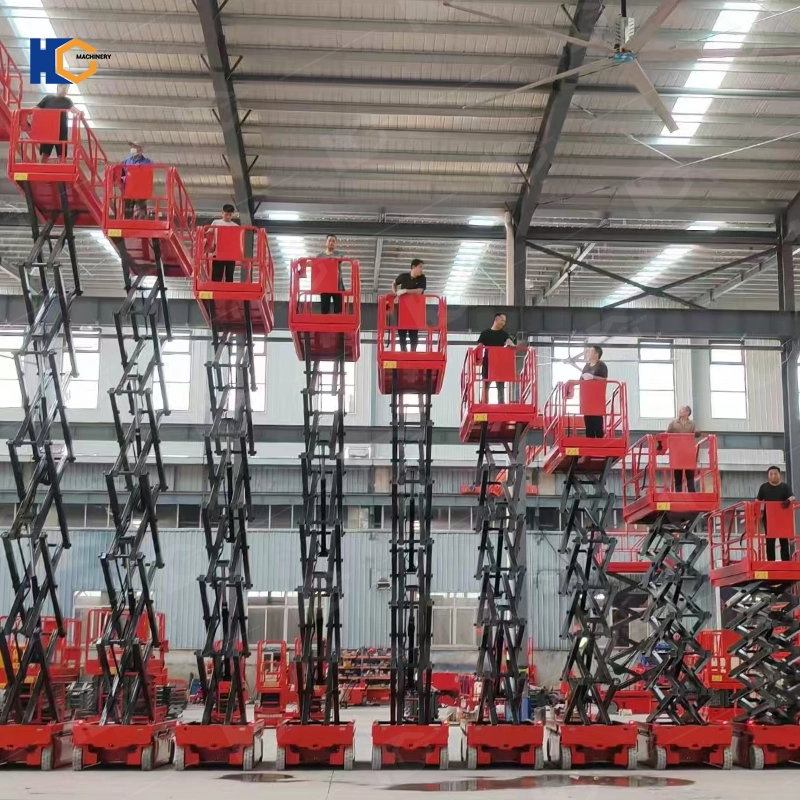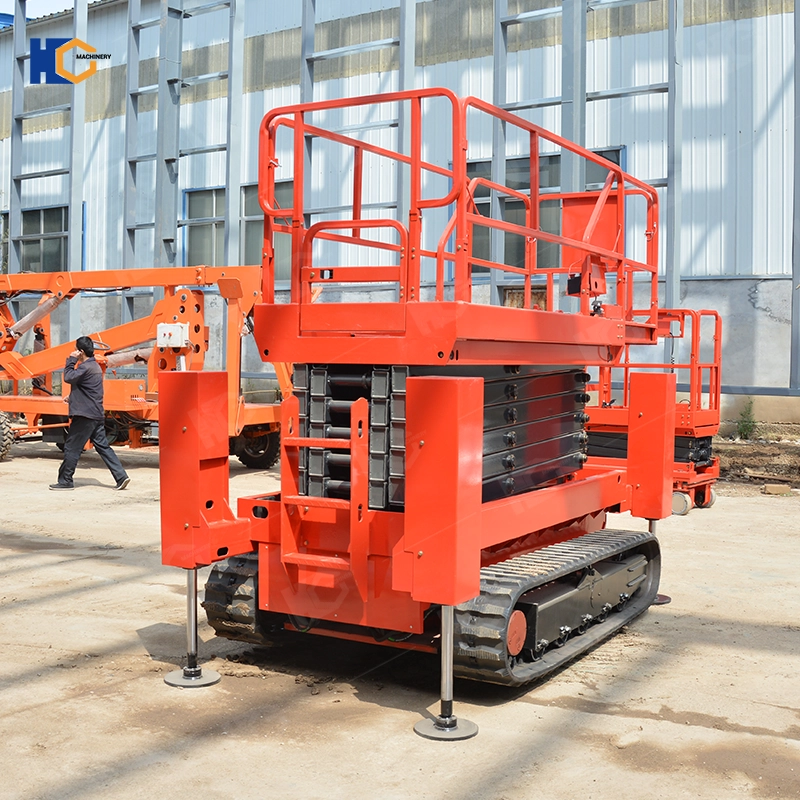![]() The Importance of Scissor Lift Weight in Practical Applications.pdf
The Importance of Scissor Lift Weight in Practical Applications.pdf
Scissor lifts are devices commonly used in industrial and commercial settings, widely employed in warehouses, factories, construction sites, and more. They achieve material transport or personnel work by raising and lowering a platform through a scissor-like mechanical arm. Based on their usage, scissor lifts can be divided into two main categories: stationary and mobile. Mobile scissor lifts can be further subdivided into manual-assist, fully automatic, and manual types.
Scissor lifts typically consist of a platform mounted on crossed, folding supports, known as scissor mechanisms. These mechanisms extend and retract vertically, allowing the platform to reach varying heights. The material used in their construction—often steel —plays a significant role in determining their weight. Steel offers robustness but adds more weight making it ideal for applications where weight is a concern.Scissor lifts operate by utilizing a hydraulic or electric system to drive the expansion and contraction of the scissor structure, thereby raising and lowering the platform. Stationary scissor lifts are typically installed in a fixed location for specific area material transport or personnel work. Mobile scissor lifts, however, can move between different work sites to adapt to changing demands.
Semi-automatic Mobile: Moved manually but with electric assist motor.
Fully Automatic Mobile: Automated movement and lifting operations via electric and hydraulic systems.
Manual Mobile: Both movement and lifting operations are handled manually, suitable for environments with infrequent movement and limited space.
647004.webp)
The scissor Lift weight as a Significant Parameter in Practical Applications
In practical applications, the scissor lift weight is a crucial consideration for users when choosing a scissor lift. The weight directly affects the ease of movement, stability, and ground load-bearing requirements.Manufacturers design lifts to support specific maximum loads, ensuring they operate safely within defined weight limits. Exceeding these limits compromises stability, posing risks to operators and equipment.
Transport and Mobility/Maneuverability:: Lighter equipment is more flexible and suitable for work sites requiring frequent movement. Scissor lifts need to be transported to job sites, which requires consideration of their weight and dimensions. Heavier lifts may require specialized vehicles or equipment for transport, adding logistical challenges and costs. Lighter lifts, on the other hand, offer easier maneuverability and more flexible deployment options.
Stability: Heavier equipment is more stable during operation, ideal for lifting heavy objects or requiring a larger work platform.
Load-Bearing Requirements: Sites with limited ground load capacity need lighter equipment to avoid damaging the floor.
533155.webp)
Main Application Scenarios and Advantages of Lightweight Scissor Lifts
Lightweight scissor lifts are typically used in environments that require frequent movement, have limited ground load capacity, or have small working spaces. Their main advantages include:
Flexible Movement: The lightweight design allows for flexible operation even in tight spaces.
Ease of Transportation: Lighter equipment is more convenient for long-distance transport.
Simple Operation: Lightweight equipment usually has a simpler operating system, reducing the difficulty of use.
Main Application Scenarios and Advantages of Heavyweight Scissor Lifts
Heavyweight scissor lifts are suitable for applications requiring the lifting of heavy objects or a larger work platform. Their main advantages include:
High Stability: The heavier weight provides higher stability, suitable for heavy-duty operations.
Strong Load Capacity: Heavier equipment typically has a higher load capacity, meeting the demands of heavy industry.
Durability: Heavy-duty equipment is usually designed to be more robust and durable, suitable for harsh working environments.
Huichuang team provides users with a variety of options
Considering the diverse needs of different users, Huichuang team has independently developed various models of lifts for customers to choose from.
We have developed a manually operated scissor lift that weighs as little as 45 kg, making it highly lightweight and portable.
For fully automatic lifts, in order to enhance stability, we have added counterweights to the chassis to increase the equipment's self-weight without compromising flexibility. The scissor lift weight of such equipment ranges from 1.5 tons to 3 tons.
For users with limited budgets who still desire a flexible scissor lift, we offer assisted-walking lifts. Although this scissor lift weight is between 2 to 3 tons, the addition of assisted-walking devices enables them to be moved with the ease of one hand.
Due to their diverse types and wide range of applications, scissor lifts have become indispensable in modern industrial and commercial settings. The scissor lift weight is is more than a numerical specification--it’s a crucial parameter to consider when selecting a scissor lift, directly impacting mobility, stability, and load capacity. Understanding the characteristics and applicable scenarios of different weights of scissor lifts and selecting the appropriate equipment based on actual needs is essential for maximizing work efficiency and safety.
